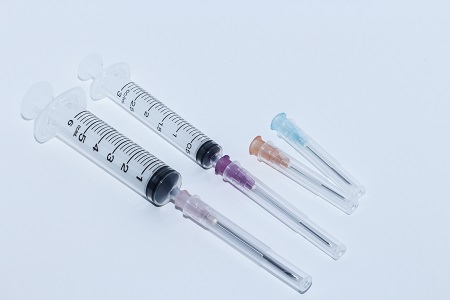Merck Champions Single-Use By Addressing Emotion Vs. Science
By Trisha Gladd, Editor, Life Science Connect

Chris Smalley, Ph.D., director of validation compliance at Merck, believes lowering the cost of medication is the key to the US gaining a stronghold on the global pharmaceutical market. As anyone knows, in order to lower the cost of medication, the cost of manufacturing will need to be lowered as well. According to Smalley, single-use technology (SUT) could be the hero. “We can make a fully enclosed, gamma-sterilized, single-use system and begin manufacturing in just a warehouse, if necessary,” he explains. “I’m not that worried about the HVAC system, because I don’t need much of a footprint. I don’t need a big cleanroom, because my processes are completely enclosed within single-use components. And I don’t need a large water for injector system, because I’m not doing a lot of cleaning validation. By driving out all of that capital cost, we can reduce the cost to the patient.”
The reduction of costs come from SUT’s ability to eliminate the need for cleaning validation, reduce labor, and allow for smaller facilities, which then reduces energy consumption. The total savings of this investment has an overall effect on the capital cost for building and retrofitting biopharmaceutical manufacturing facilities—a task that will need to be achieved if US pharma wants to start building facilities globally at the pace necessary to meet new demands. Building a stainless steel facility can take years, where the average time to build a single-use facility is 12-18 months.

|
| Chris Smalley, Ph.D., Director of Validation Compliance, Merck |
Recently, it was announced that generics pharmaceutical company, Mylan, is set to distribute Gilead’s hepatitis C drugs, Sovaldi and Harvoni, in India and have committed to doing so at a cost affordable to that market. With 12 million people suffering from hepatitis C in India, Mylan has the opportunity to address an enormous unmet need in this market. However, according to Yahoo News, Sovaldi currently costs $1,000 for just one pill, with a full course of treatment costing $84,000. The price tag for treatment with Harvoni is $94,500. Mylan has not revealed how they will lower this cost, but again, it is an obstacle any pharmaceutical manufacturer will need to address if and when they expand overseas.
So the challenge is clear and, at least for any proponent of single-use systems, like Smalley, so is the solution. However, to get to a point where single-use is adopted on such a large scale that it’s the standard for new facilities overseas, industry will need to get past its fears, which Smalley says are based more on emotion than science.
Particulates Are Not Your Enemy
If you asked Hospira, they may very well say particulates are most definitely their enemy. In 2014, the US-based global pharmaceutical and medical device company announced a total of 14 recalls related to particulate matter and have already announced an additional two in 2015. Despite the U.S. Pharmacopeial Convention’s (USP) release of USP Chapter <790>: Visible Particulates in Injection, last year, there is still regulatory scrutiny when it comes to particulates in finished dosage forms and the definition of “essentially free.” Smalley explains, “No one wants to step up and say, ‘It has to be zero,’ and conversely, there’s no one willing to say, ‘Even though there might be a small amount of particulates that show up in the final dosage form, science shows us there is no risk to the patient.’” However, based on the science he’s seen in over 40 years in the pharmaceutical industry, Smalley says there is little to no risk to the patient.

He references the study by Salvatore Turco and Robert King outlined in the book, Sterile Dosage Forms. In order to study pathology and understand the effects of particulates in the body, Turco and King injected rabbits with large amounts of ground glass. Although today’s recalls seem to indicate that particulates are a danger to patients, the study indicated otherwise. “The glass did not react anywhere when embedded in the tissues of the rabbit. It did not cause any inflammation and it did not cause any disease,” explains Smalley about the experiment. “For any of the components that we have selected as materials for our manufacturing process, whether it’s silicon tubing or a stopper on the vial, as soon as you put the syringe through, you’re going to generate a particulate. Science shows us though that there are no adverse events, but people are responding to the emotion. If they don’t change, it’s going to be a real obstacle to embracing single-use.”
He continues that, most often, it’s not the material you’re using that produces particulates but the operators in your cleanroom. “When we used to operate classic multi-use systems, we’d rinse them with water injection and then we’d autoclave or depyrogenate it, if the equipment was capable of being depyrogenated,” explains Smalley. “Once this process was complete, we knew, especially if we were in fill finish operation, we were substantially free from particulates. But then you’ll have an airborne particle counter operating in your cleanroom and if an operator even bumps a hose from the horn that goes to the air collector, all of a sudden you’ll have a jump in particulates.” He says this is because when you flex tubing, you release particulates. Even if the manufacturers make the bags particulate free, Smalley says when the bag is manipulated in any way, particles will be generated. “The people are really your biggest source of particulates, and that is what’s really driving the emotion around particulates.”
When it comes to emotion and familiarity, he offers the example of nuclear power vs oil. “If we’d discovered nuclear power before oil, we’d be using that,” he explains. “The first time there was a major oil spill, like the 1969 Santa Barbara oil spill, officials would say we shouldn’t use oil anymore and we’re just going to stick with nuclear power, because you always go with what you’re comfortable with.”
The Standardized Extractables Protocol: Vendor Data Is Key
As a presenter at BDP Week this month, Smalley is going to discuss not only the topic of particulates but also extractables and leachables. Through adoption of BPOG’s Standardized Extractables Protocol, he says we would finally be able to compare “apples to apples,” but vendor objections are standing in the way. “The vendors are a little resistant to that because they’re afraid if they standardize the testing, they’ll turn their components into commodities,” he explains. “Maybe it will, and I don’t think that’s bad. If we can standardize the quality of information we get from the vendors, we could start doing risk assessments. We already know there’s a basic expectation that we’ll get results from the required USP tests.”
In his presentation, Single-Use System: Obstacles to Implementations, Smalley plans to explain a very basic way of performing risk analysis. This analysis has been reviewed by several regulators, because Merck has already included it in some of their submissions. He mentions a conversation with CDER just last week where they asked about the raw data from the risk assessment in one of those submissions. “They specifically asked, ‘Could we see some of that raw data? We understand it could all be from the vendor,’” he says about the conversation. “They acknowledged that we may perform risk assessments solely on the basis of vendor data, and it was a great acknowledgement on their part that vendor data might be adequate enough to perform those risk assessments.”
The Future Of Single-Use In Pharma
As part of his presentation, Smalley also plans to discuss where industry goes from here. “What the industry needs to do is think in new ways,” he says. “I have told the vendors of many single-use components that someone in their industry needs to be the Henry Ford. He used standardization and an automation line to drive down the price of automobiles, which made them affordable for the masses. When you begin to automate, you can drive quality up and drive particulates down because you’re getting the people out of the room.”
While vendors have the future of standardization in their hands, Smalley says this doesn’t mean individual companies can’t make efforts to move forward with a level of standardization within their own organization. At Merck, a group of experts created the Single-Use Network, or SUN, which is a group of single-use advocates who share the common goal of facilitating the implementation of single-use at Merck. As part of that effort, a catalog of single-use components is being created, which includes a validation package for each component— an extractables analysis, analysis on its particular profile, analysis on its endotoxin, and its gamma sterilization. These validation packages were created by Smalley as an effort to make the equipment easier to select and use. So while each facility has the ability to select the ones they want to use, everyone is choosing from the same group. “We’re telling people, ‘If you pick something out of the catalog, you’re good to go,’” he explains. “However, if they customize something, they’ve just created a whole world of hurt, because now they have to submit a request for it to be validated. This is something Merck is happy to share and is working together with Pfizer, Genentech, Amgen, and others, who have all done significant pioneering work for single-use, to do the same because we want to support the industry in moving forward.”
In the field of single-use technology, Smalley believes users are making great progress, but there is still one area single-use needs to tap into before it can really be embraced by the industry. “If we go back just four years, the only people embracing single-use were the pure biotech organizations, like the Genentechs and Amgens. As we’ve moved forward, we’ve begun to get companies like Merck, GSK, and other companies that are not just pure biotech to be involved. Where I think we can continue to make great progress is a lot of the small molecule manufacturing have not embraced it yet, but they have a lot of products that are chemotherapeutic agents that need to be kept away from the operators. Single-use could be answer to them as well, especially when it comes time to dispose of that waste.”
While he acknowledges that people may find flaws with single-use, he says this is because nothing is perfect, and ultimately, embracing and addressing these flaws is what will drive the technology forward. “We shouldn’t be walking away when we find something wrong and we shouldn’t be afraid of single use systems because of a bad experience. We should learn from it and use it to determine what we need to do differently.”
Dr. Smalley will be presenting during the BDP Week conference on Monday, March 30th at 2:15.
